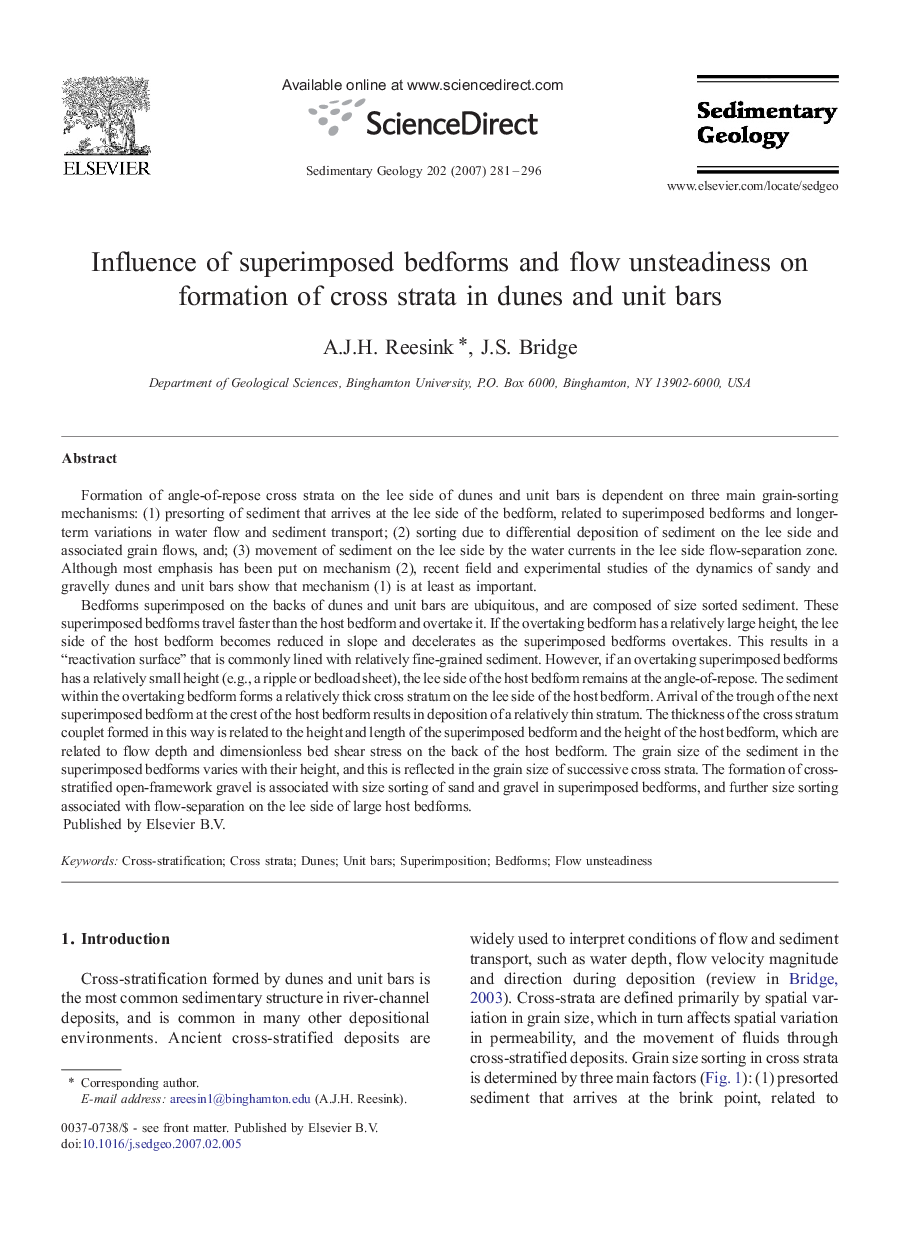| Article ID | Journal | Published Year | Pages | File Type |
|---|---|---|---|---|
| 4690635 | Sedimentary Geology | 2007 | 16 Pages |
Formation of angle-of-repose cross strata on the lee side of dunes and unit bars is dependent on three main grain-sorting mechanisms: (1) presorting of sediment that arrives at the lee side of the bedform, related to superimposed bedforms and longer-term variations in water flow and sediment transport; (2) sorting due to differential deposition of sediment on the lee side and associated grain flows, and; (3) movement of sediment on the lee side by the water currents in the lee side flow-separation zone. Although most emphasis has been put on mechanism (2), recent field and experimental studies of the dynamics of sandy and gravelly dunes and unit bars show that mechanism (1) is at least as important.Bedforms superimposed on the backs of dunes and unit bars are ubiquitous, and are composed of size sorted sediment. These superimposed bedforms travel faster than the host bedform and overtake it. If the overtaking bedform has a relatively large height, the lee side of the host bedform becomes reduced in slope and decelerates as the superimposed bedforms overtakes. This results in a “reactivation surface” that is commonly lined with relatively fine-grained sediment. However, if an overtaking superimposed bedforms has a relatively small height (e.g., a ripple or bedload sheet), the lee side of the host bedform remains at the angle-of-repose. The sediment within the overtaking bedform forms a relatively thick cross stratum on the lee side of the host bedform. Arrival of the trough of the next superimposed bedform at the crest of the host bedform results in deposition of a relatively thin stratum. The thickness of the cross stratum couplet formed in this way is related to the height and length of the superimposed bedform and the height of the host bedform, which are related to flow depth and dimensionless bed shear stress on the back of the host bedform. The grain size of the sediment in the superimposed bedforms varies with their height, and this is reflected in the grain size of successive cross strata. The formation of cross-stratified open-framework gravel is associated with size sorting of sand and gravel in superimposed bedforms, and further size sorting associated with flow-separation on the lee side of large host bedforms.
